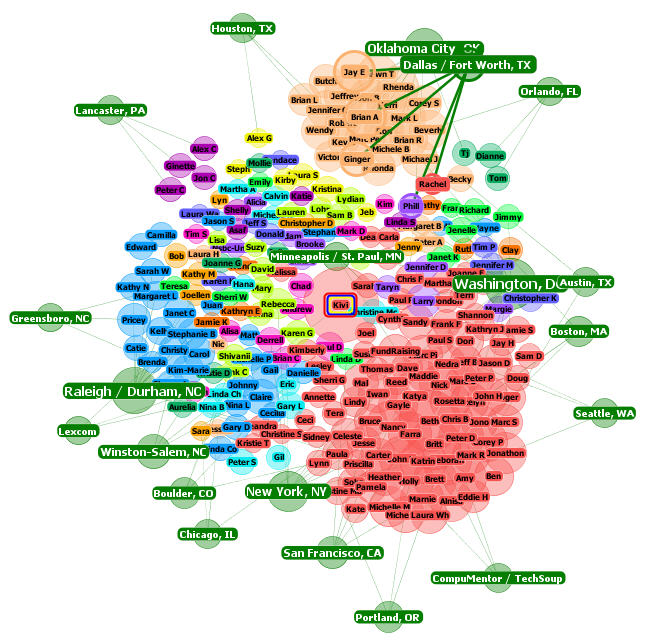 When we talk about fundraising through social media (and we had many of these conversations at 09NTC this week), the discussion always turns to how we should go about converting into long-term donors those friends of friends – people who gave to the cause because a friend of theirs and an existing supporter of ours (let’s call her the “Original Fan”) asked them to.
When we talk about fundraising through social media (and we had many of these conversations at 09NTC this week), the discussion always turns to how we should go about converting into long-term donors those friends of friends – people who gave to the cause because a friend of theirs and an existing supporter of ours (let’s call her the “Original Fan”) asked them to.
The standard advice is to come up with a cultivation campaign that introduces these new people to the organization over time and encourages them to become involved as a volunteer or donor on their own, directly with the nonprofit.
The problem is that this treats the Original Fan, whom we sometimes call the evangelist or über-friend, like some kind of inconvenient or spent middle man. For many nonprofits, the Original Fan is anything but a middle man; instead he or she is more like a gatekeeper or nightclub bouncer. It’s only through the Original Fan that the nonprofit will have access to those people and their wallets.
Most national organizations with widely understood or broadly supported missions should probably go ahead and try to establish direct relationships with all of those friends of friends. But nonprofits with specific geographic limitations or niche missions (e.g., diseases that affect relatively few people) should move forward much more carefully and deliberately, checking to see just how likely it is that the friends of friends will actually convert into long-term, direct donors.
For example, I recently donated to the Community Food Bank of New Jersey, because my friend Nancy Schwartz asked me to as part of her birthday celebration. While I certainly support the mission of food banks in general, I live in North Carolina. Nancy is the sole reason that I donated to this food bank in New Jersey. No matter how many newsletters or appeal letters the Community Food Bank of New Jersey might send me in the future, it is extremely unlikely that I will ever give them another dime.
Unless, of course, Nancy – the Original Fan – asks me to.
That’s why when the executive director of Positive Wellness Alliance (PWA)- the beneficiary of my own birthday fundraiser and also a very locally based organization – asked whether she should add the names of my donating friends to her prospect database, I told her no. (I serve on the board, so that’s why I was asked. I doubt few Original Fans are consulted at all – which may be part of the problem.)
Instead, I asked her to send a thank-you note directly to my donating friends and invite them to sign-up for PWA’s e-newsletter, should they want to. I’ve asked her not to message these people again otherwise. Why?
Because as the Original Fan, I know these people are giving because of me, and because I asked, not really because of the cause. While I’m sure that everyone who donated to PWA supports the mission, just as I support food banks, nearly all of the people who donated lived outside the geographic service area, and I believe it’s extremely unlikely that they would give again on their own.
Unless, of course, I – the Original Fan – asked them to.
I hope it is clear by now where I am going with this. While your nonprofit should definitely spend some time coming up with cultivation strategies for friends of friends, it is equally important (and more important for local or niche organizations) to develop strategies to keep your Original Fans fully engaged and willing to fundraise again and again for you.
The food bank and PWA don’t need strategies to reach Nancy’s friends and my friends; they need strategies to keep Nancy and me and all of the Original Fans happy with the organization and excited about its work so that we will continue to tap our networks on their behalf. It’s just not worth twisting ourselves in all different directions trying to convert these people into direct donors when it’s both easier and more productive to more fully engage the Original Fan.
Does your org have strategies of either kind — for friends of friends or for the Original Fans? Where do you think nonprofits should put the most priority? Leave a comment and let’s talk about it.





